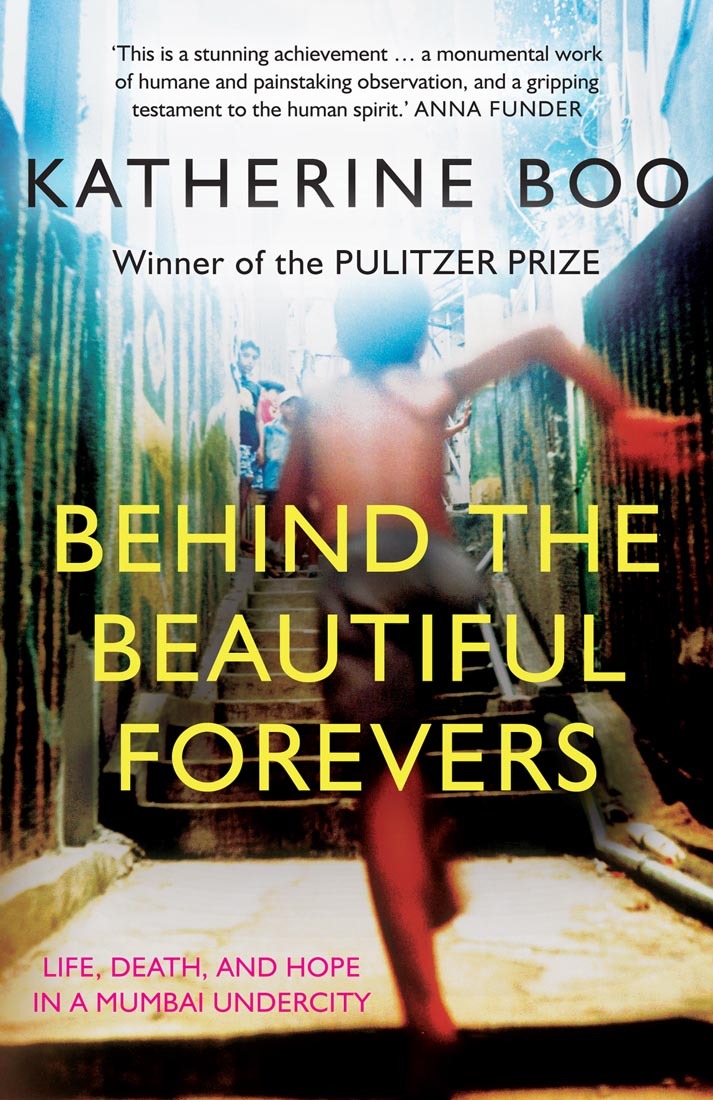Facing the social and economic problems of a poverty-stricken India
Like many developing worlds, Mumbai is a city that straddles two realities. In our 21st century, it is quickly rising as a global superpower. Yet its reputation as a corrupted and poverty-stricken city continues to pollute its worth.
Behind the Beautiful Forevers is a telling tale of life, death and hope in the slums that continue to plague India.
Katherine Boo — a Pulitzer Prize winning journalist praised for her reporting of disadvantaged communities — divulges the conditions that hold this great nation back. She describes how tensions over religion, caste, sex, power and economic envy are rampant.
Boo immersed herself in the culture of Annawadi — a makeshift settlement on the marshy lands of Mumbai’s airport — for three years to illustrate the plight of slum dwellers in one of the world’s greatest unequal cities. In her book, she documents the lives of several Annawadians and describes how each tries to overcome their ruinous livelihoods as India begins to prosper. In an attempt to elevate themselves out of poverty and into the middle-class, some Annawadians turn to corruption, the very practice that churns the wealth of the political elite.
Behind the Beautiful Forevers is a non-fiction narrative that reads like fiction. Boo pays incredible attention to detail. Her use of imagery illustrates the severity of the situation. She describes Annawadi as an “urban armpit” tainted with filth and malodor, where 3000 people have packed into 335 lopsided huts. Her writing is compelling. It is utterly shocking once you are reminded the events which unfold are all true.
Boo includes a nice range of voices in her book, each story as unforgettable as the next. The two characters which stand out the most were Abdul Husain and Asha Waghekar, a perfect depiction of good versus evil. While at their core the two crave the same ambitions, their definition of a-means-to-an-end differs greatly.
Abdul is a reserved but enterprising teenager who finds “a fortune beyond counting” in the recyclable garbage that flows into Annawadi. He has made an honest life for his family by sorting through garbage, but jealousy is widespread in a decrepit slum. The Husains, being part of the Muslim minority, face a great deal of ethnic hatred due to their more advanced superior status. This hatred eventually leads to Abdul’s incarceration, when he is falsely accused of taunting a woman to suicide.
With Abdul’s story, Boo demonstrates the grotesque infringement on human rights that exists in these impoverished villages. ‘Innocent until proven guilty’ is not a belief many Mumbai officials operate by. Abdul is repeatedly beaten until he is forced to confess to a crime he did not commit and his mother is enticed to pay up if she wishes for the release of her son. Abdul is quoted saying, “The Indian criminal justice system was a market like garbage. Innocence and guilt could be bought and sold like a kilo of polyurethane bags.”
Asha though, is a strong-minded woman with a keen eye for financial opportunity, no matter how unethical. Driven by deep scars from a childhood of even graver poverty, Asha longs to be perceived as the most resourceful person in her slum and thus, strives to become a slumlord. She represents the embodiment of corruption, running scam businesses and holding the people of Annawadi indebted to her. Despite her many spiteful efforts, there is one irrevocable obstacle that continues to hold her back. Asha is a woman. She thus must prey on the support of powerful men to help elevate her status.
With Asha’s story, Boo exemplifies this rift in equality between men and women. Traditional values often undermine gender equality, especially in these small, poor villages where women are expected to leave the strategic decision-making up to men.
Behind the Beautiful Forevers highlights this competitive system of making more and more money in an age where India has seen an increase in capital. This system of lies, threats and ultimatums traps the people of Annawadi in old, unprosperous ways. With government intervention virtually non-existent, those with power will continue to benefit by exploiting the status of the poor.
Boo’s book is not for the faint of heart. Her goal is to illustrate the cruel reality of social inequality and she does so with precise, stomach-churning detail. Her book raises a critical question: How do you fix a feeble nation if the government is better at nourishing corruption than human capability?
Behind the Beautiful Forevers is available for sale at Chapters Indigo and at http://amazon.ca.
